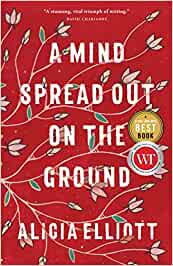I’ve been reading a thoughtful, and challenging, book of essays by Alicia Elliott. And, as a person who was born Caucasian and all that implies in our white supremacy society, I have found the essays haunting.
Elliott reminds the reader that the photographer chooses how to portray their subject, and that the camera is an intermediary. Even a photograph, which we might think of as an “objective” depiction of reality, is biased, by the photographer’s intent. Elliott is concerned about how Indigenous peoples have been portrayed by photographers over the decades, and mostly without the consent of those being photographed.
I’ve thought about her points in relation to the photos I take and use in my blog posts. I rarely take photos of people; usually mine are of a scene which I have found beautiful or intriguing in some way. But to capture that, I choose how I photograph it. How much to zoom in, what angles, how to present the subject most artfully in a given situation of light.
There ‘s no doubt about it; my blog posts filter some things out, in order to zoom in and focus on others. Elliott’s essay has reminded me of my responsibility and my obligation. It’s impossible to present the “whole truth” of a landscape. What I present in a blog post is filtered through my eyes, and the lens of the camera. After having read Elliott’s essay, I come to the art of photography with a greater awareness, and humility, about what the photograph can do.

